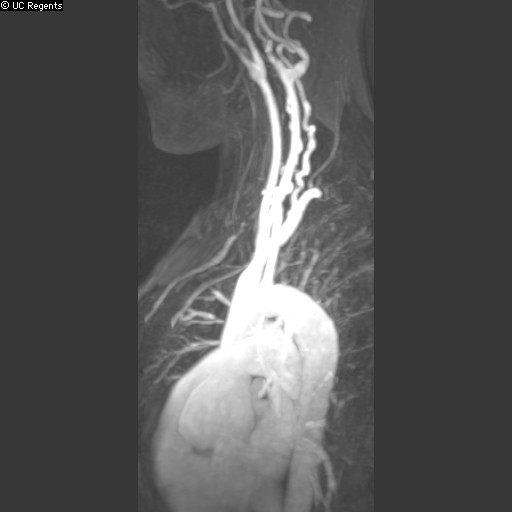How Cardiac MRI Aids in the Diagnosis of Heart Disease in Women
 For women in particular, cardiac MRI helps achieve diagnosis and further guide management of treatment in patients with heart disease. Women are often misdiagnosed, and the trend of their misdiagnosis has contributed to rising cardiac deaths among their patient population.
For women in particular, cardiac MRI helps achieve diagnosis and further guide management of treatment in patients with heart disease. Women are often misdiagnosed, and the trend of their misdiagnosis has contributed to rising cardiac deaths among their patient population.
"It's been documented that women are much more likely to die or have complications from heart disease because it's unrecognized," says Karen Ordovas, MD, MAS, director of Cardiac Imaging in the UC San Francisco Department of Radiology and Biomedical Imaging. "They are more likely to be misdiagnosed and under treated. If you have a female that shows up to an emergency room with chest pain, she is more likely to be judged not to have real pain and to have a test that is suboptimal for her, that shows no disease. Even if the patient ends up diagnosed with ischemic heart disease, they may receive less medication."
Historically, this has been proven to be the case, so although there have been studies that show that with all the medicine available, the mortality for heart disease for men is stable and decreasing, for females it's actually increasing. On top of that there are a lot of diseases that affect the heart of females that are systemic diseases such as rheumatoid arthritis, or scleroderma, or lupus, and the heart involvement is frequently not recognized.
There are diseases that are specific or much more frequent in females that can affect the heart. They are usually unrecognized, unless very specialized tests such as cardiac MRI are done which can show doctors the substrate of the heart, before the patient has symptoms. Unfortunately, the causes or factors as to why women typically have different symptoms of heart disease are not completely understood.
 "For females, their coronary arteries are not usually blocked even when they have heart disease due to ischemia," explains Dr. Ordovas. "For example, for a female patient who presents with ischemia (not enough blood supply and oxygen to the heart), if you follow the same traditional course of diagnosis and look for a coronary blockage, you may see it's actually not blocked, so you may infer that the patient doesn't have coronary disease. However, women frequently have coronary disease with open coronary arteries, and should get appropriate treatment for that."
"For females, their coronary arteries are not usually blocked even when they have heart disease due to ischemia," explains Dr. Ordovas. "For example, for a female patient who presents with ischemia (not enough blood supply and oxygen to the heart), if you follow the same traditional course of diagnosis and look for a coronary blockage, you may see it's actually not blocked, so you may infer that the patient doesn't have coronary disease. However, women frequently have coronary disease with open coronary arteries, and should get appropriate treatment for that."
In women, Dr. Ordovas says, it's usually their distal smaller vessels that are abnormal, known as coronary microvascular disease or small vessel heart disease. As a radiologist, what you really want to look at is the appearance of the heart muscle to decide if it is not receiving enough oxygen, which is called ischemia. You don't only look at the "tubes", but you look at the following aspects of the cardiac muscle for malfunction or amount of scarring.
Cardiac MRI provides a unique way of imaging the "target" and not the "tube" that brings blood to it. Such images can help with better overall diagnosis which can help reduce heart disease mortality rates in women.
The Cardiac and Pulmonary Imaging Section at UCSF Radiology offers cardiac MRI for patients. We partner with patients and their families, researchers from our own and other institutions, donors and other visionaries along with referring colleagues in the fields of Cardiology, Thoracic Surgery, Pulmonary Medicine, Oncology, Infectious Disease and Primary Care/Internal Medicine. Visit the section's page to learn more.
